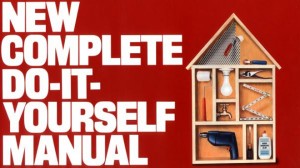 Most U.S. companies will increase the dollar value of health incentives offered to workers in 2012, based on the annual survey from Fidelity Investments and the National Business Group on Health addressing employers’ plans for health benefits. 3 in 4 employers used incentives in 2011 to engage employees in wellness programs, with an average incentive value of $460. This number was $260 in 2009.
Most U.S. companies will increase the dollar value of health incentives offered to workers in 2012, based on the annual survey from Fidelity Investments and the National Business Group on Health addressing employers’ plans for health benefits. 3 in 4 employers used incentives in 2011 to engage employees in wellness programs, with an average incentive value of $460. This number was $260 in 2009.
The poll found that employers expect employees to improve their personal health, and will increasingly ration access to benefits based on employees’ engagement with health criteria.
Employers’ approaches to incentives have begun to adopt value-based benefit design strategies that go beyond “a t-shirt and water bottle,” according to Fidelity. Incentives are often delivered through cash, contributions to HSAs, and gift cards, and are increasingly welcomed by employees.
New-new health improvement programs address biometric testing such as cholesterol screening (mandated by 5% of companies where employees are excluded from health benefits if they do not undergo the test). In 2012, 9% of companies are expected to take such action. This is the “stick” approach, as opposed to the “carrot” tactic.
The most common wellness programs are smoking cessation and Employee Assistance Programs. Healthy cafeteria food options will be introduced by 16% of employers in 2012, with 51% of employers already taking a healthy cafeteria approach. Nearly one-half of companies offer health advocates to workers, with 11% more companies doing so in 2012.
The survey was conducted in November-December 2011 among 139 companies across industry sectors. Employers ranged in size from 1,000 to 100,000 employees, and thus did not include small business views.
Health Populi’s Hot Points: The implications of employers pushing more “stick”-style incentives onto workers covered by health benefits will translate into the market in the form of greater adoption of retail health services and products among health citizen-consumers. This week, several news items illustrate the growing menu of retail options for consumers managing health where they “live, work, play and pray,” as the Surgeon General portrays the health ecosystem…
- Fidelity launched a health and insurance mobile app, which covers 1.2 million enrollees who have an iPhone, iPod Touch, or Android phone. This app is part of the firm’s NetBenefit patient portal, and includes functions such as provider data, copayments, contact numbers, mobile access to benefit summaries, dental and vision content, and a find-a-pharmacy tool coupled with MapQuest.
- Walgreens unveiled its strategy to move the pharmacist closer toward the front-of-store to more intimately engage with health consumers to address population health management for high blood pressure, A1c in diabetic patients, and LDL/cholesterol.
- More retail storefronts selling health insurance are popping up throughout the U.S. I encountered a Highmark Direct store on a recent shopping trip to outlets in the shopping mecca of Lancaster, Pennsylvania, as well as observing one in Orlando on a recent business trip.
On the dark side of retail health, two news stories are sobering:
- Consumer Reports sheds light on the poor coverage provided by so-called “mini-med” health plans; and,
- Medical bills can wreck personal credit, even when paid off, according to The Commonwealth Fund.
Welcome to the ever-morphing world of retail health in the U.S., which will expand well beyond over-the-counter pain meds and durable medical equipment. The new medical home is the health citizen’s home and, in the health care financing regime that is uniquely American, the workplace.




 Interviewed live on BNN Bloomberg (Canada) on the market for GLP-1 drugs for weight loss and their impact on both the health care system and consumer goods and services -- notably, food, nutrition, retail health, gyms, and other sectors.
Interviewed live on BNN Bloomberg (Canada) on the market for GLP-1 drugs for weight loss and their impact on both the health care system and consumer goods and services -- notably, food, nutrition, retail health, gyms, and other sectors. Thank you, Feedspot, for
Thank you, Feedspot, for  As you may know, I have been splitting work- and living-time between the U.S. and the E.U., most recently living in and working from Brussels. In the month of September 2024, I'll be splitting time between London and other parts of the U.K., and Italy where I'll be working with clients on consumer health, self-care and home care focused on food-as-medicine, digital health, business and scenario planning for the future...
As you may know, I have been splitting work- and living-time between the U.S. and the E.U., most recently living in and working from Brussels. In the month of September 2024, I'll be splitting time between London and other parts of the U.K., and Italy where I'll be working with clients on consumer health, self-care and home care focused on food-as-medicine, digital health, business and scenario planning for the future...